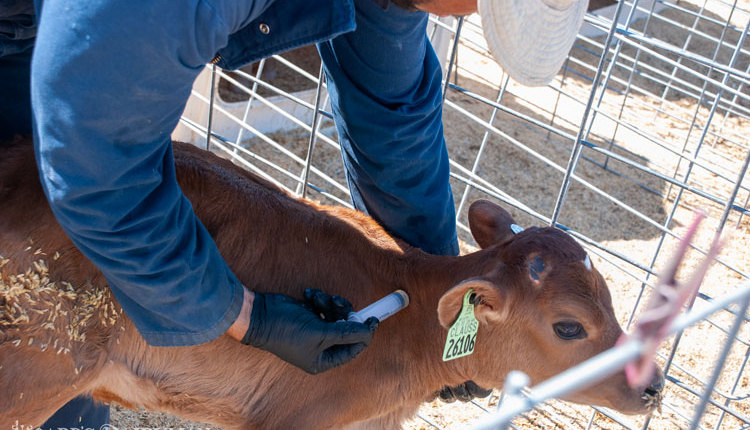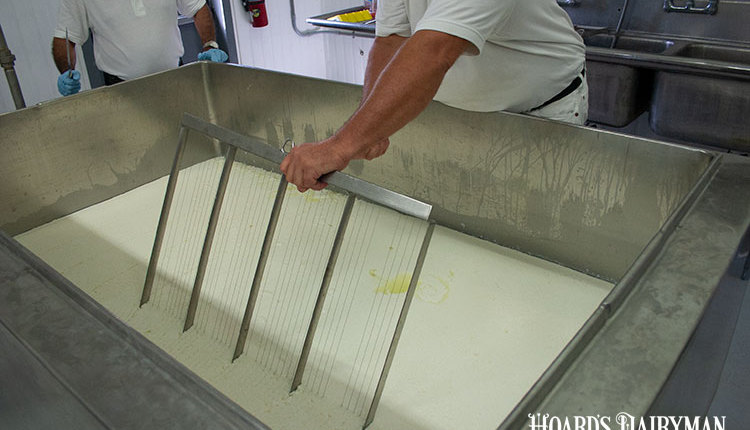The author is the dairy development manager for Vita Plus of Madison, Wis. He is a member of the board of directors with Citizens State Bank of Loyal, Wis.
it certainly feels like a "checkbook shock treatment" comparing the milk checks of last year to the lack of numbers showing up now. And that is the way it is in the last of the true supply and demand businesses - agriculture. It is not only the commodity of milk that experiences volatility. Grains, cattle, hogs, poultry and other food products have the same bumpy ride. When the prices paid for products start to equal the cost to produce that product, there is not much money left in the bank account at the end of the month or year.
Setting up the farm's finances in a good year should result in less stress in the preceding year or years when margins tighten up.
It is important to be in the top 50 percent of producers, or even higher, when the average producers are breaking even financially. Yes, we know someone has to hold down the bottom 50 percent or even bottom 25 percent, but it is a real struggle in this kind of occupation. The rural farm life is a great place to live and raise a family, but to continue that lifestyle there needs to be profitability along with reserves for the downswings.
In years when cash flows more freely . . . payables need to be zeroed out, lines of credit paid down, equipment used daily refurbished or replaced, and prepayments made to lighten the tax liability. Cash should be built up, with current assets to current liabilities achieving a 2:1 ratio.
When that higher dollar income year passes, what should you do?
1. Pack up the year-end balance sheet, the last three years of taxes or income statements, your best guess projections for this year and make an appointment with your lender, now.
Do not wait until bills start to pile up. Lenders appreciate it when producers are looking ahead and make the first steps to do something about what could emerge in the future.
2. Make sure you come in with a written business plan. It does not have to be long, just a good logical thought-out direction.
3. After you have reviewed your financial documents with the lender, ask for their suggestions. They work with a lot of producers, numbers and situations. Give them the first word on how they see your situation. They are professionals in their field of work.
4. If the suggestions of redoing the amortization of some loans does not come up, ask about the move. Stretching out the years of repayment lowers the required principal needed each month or year. Sure, it will take longer to repay a loan but do not stress out the family by allowing higher payments.
5. Discuss the possibility to start a line of credit or raise the one you already have with the bank. You may not need the extra money now; however, based on your anticipated needs in the months to come, the cushion may be welcomed. This makes more sense than making a frantic call in the future when the supplier says C.O.D. on the next delivery.
6. Interest rates are still at historically low levels. Redoing loans while discussing variable and locked-in interest rates should be part of a discussion.
7. Make sure you still do the right things in down years that you did in years of plenty, including putting up or buying the highest quality feed, treating it, packing it and storing it. Cows do not understand "Economics 101." Cows understand care, comfort and nutrition. As Mike Hutjens says, "Don't give up milk!" Every extra pound is even more important now.
Agriculture has had a nice run over the last few years, some enterprises longer or better than others. The next few years may not feel as healthy; that is the nature of the business.
Factors beyond the producers control, such as high dollar values, cool down some exports. The European farmers are coming off of quotas, and it may take a year before the global markets get a handle on that direction. The needs and buying habits of import countries like China and others are now affecting the dairy industry's cash flow. Then there is always the unknown world event that blindsides everyone.
Get ahead financially when incomes are high, prepare and accept the times when incomes are low. This will help ease the blow when it's getting tighter.
This article appears on page 680 of the October 25, 2015 issue of Hoard's Dairyman.
Return to the Hoard's Dairyman feature page.
it certainly feels like a "checkbook shock treatment" comparing the milk checks of last year to the lack of numbers showing up now. And that is the way it is in the last of the true supply and demand businesses - agriculture. It is not only the commodity of milk that experiences volatility. Grains, cattle, hogs, poultry and other food products have the same bumpy ride. When the prices paid for products start to equal the cost to produce that product, there is not much money left in the bank account at the end of the month or year.
Setting up the farm's finances in a good year should result in less stress in the preceding year or years when margins tighten up.
It is important to be in the top 50 percent of producers, or even higher, when the average producers are breaking even financially. Yes, we know someone has to hold down the bottom 50 percent or even bottom 25 percent, but it is a real struggle in this kind of occupation. The rural farm life is a great place to live and raise a family, but to continue that lifestyle there needs to be profitability along with reserves for the downswings.
In years when cash flows more freely . . . payables need to be zeroed out, lines of credit paid down, equipment used daily refurbished or replaced, and prepayments made to lighten the tax liability. Cash should be built up, with current assets to current liabilities achieving a 2:1 ratio.
Develop a game plan
When that higher dollar income year passes, what should you do?
1. Pack up the year-end balance sheet, the last three years of taxes or income statements, your best guess projections for this year and make an appointment with your lender, now.
Do not wait until bills start to pile up. Lenders appreciate it when producers are looking ahead and make the first steps to do something about what could emerge in the future.
2. Make sure you come in with a written business plan. It does not have to be long, just a good logical thought-out direction.
3. After you have reviewed your financial documents with the lender, ask for their suggestions. They work with a lot of producers, numbers and situations. Give them the first word on how they see your situation. They are professionals in their field of work.
4. If the suggestions of redoing the amortization of some loans does not come up, ask about the move. Stretching out the years of repayment lowers the required principal needed each month or year. Sure, it will take longer to repay a loan but do not stress out the family by allowing higher payments.
5. Discuss the possibility to start a line of credit or raise the one you already have with the bank. You may not need the extra money now; however, based on your anticipated needs in the months to come, the cushion may be welcomed. This makes more sense than making a frantic call in the future when the supplier says C.O.D. on the next delivery.
6. Interest rates are still at historically low levels. Redoing loans while discussing variable and locked-in interest rates should be part of a discussion.
7. Make sure you still do the right things in down years that you did in years of plenty, including putting up or buying the highest quality feed, treating it, packing it and storing it. Cows do not understand "Economics 101." Cows understand care, comfort and nutrition. As Mike Hutjens says, "Don't give up milk!" Every extra pound is even more important now.
All runs end
Agriculture has had a nice run over the last few years, some enterprises longer or better than others. The next few years may not feel as healthy; that is the nature of the business.
Factors beyond the producers control, such as high dollar values, cool down some exports. The European farmers are coming off of quotas, and it may take a year before the global markets get a handle on that direction. The needs and buying habits of import countries like China and others are now affecting the dairy industry's cash flow. Then there is always the unknown world event that blindsides everyone.
Get ahead financially when incomes are high, prepare and accept the times when incomes are low. This will help ease the blow when it's getting tighter.









